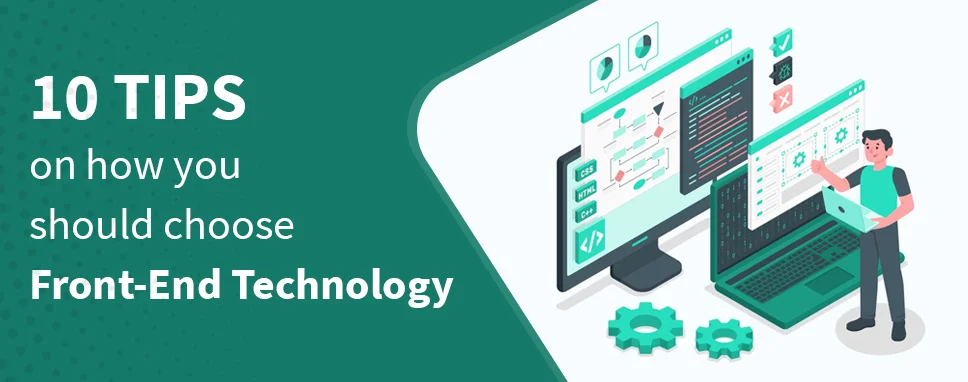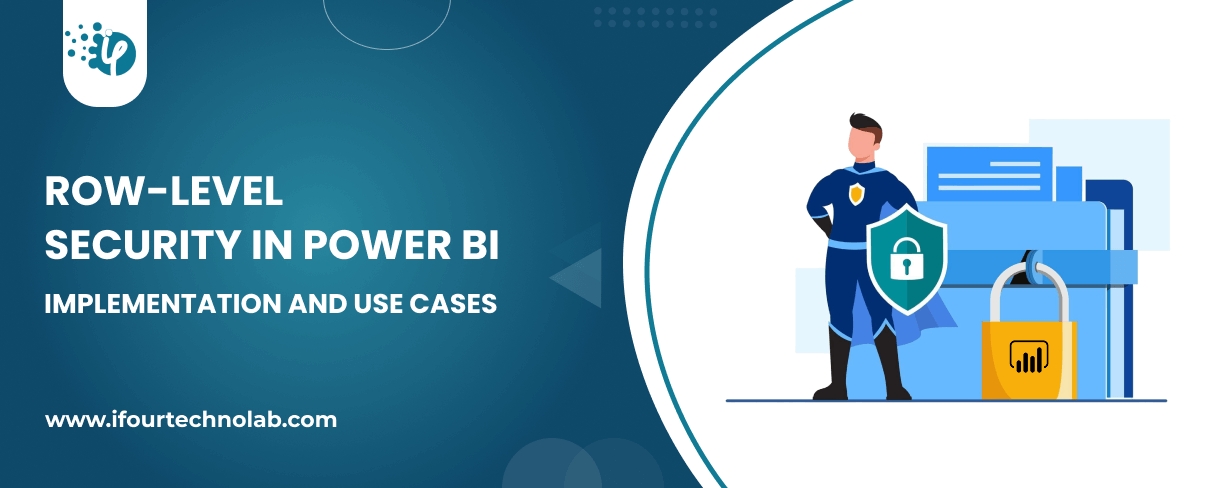17 Power BI Myths and Misconceptions Busted | Uncover the Truth
Did you know that 70% of CTOs (Chief Technology Officers) hesitate to adopt Microsoft Power BI because of its myths and misconceptions that float around. What they fail to see is...
Listening is fun too.
Straighten your back and cherish with coffee - PLAY !

To get atop-notch software product or application with fine quality depends on how you make the decisions while its development. And among those crucial decisions choosing the front-end technology is the one. The right technology stack always keeps you on track and helps in meeting customer expectations. Understanding the customer requirements and givingan appealinglook that could catch one’s eyeballs would make great sense. Over time, Angular has become one of the desirable choices for front-end developments in the angular development companies. This is due to the light-weight and impeccable features of Angular that have created a stir in the market.Not only these, but Angular applications are also known for their high-performance, security, and scalability factors.
“The front-end technology stack includes both programming languages and frameworks that have different features and can affect the final operation of a web product. We should keep in mind that when developing a web application, we cannot talk about technologies for the front end part without reference to the technologies used for the back end. They should work great together. Among the main factors that I would advise to pay attention to when choosing front end technology for a web project are the following:
- Goals and complexity of the project. If you are going to work with a web product with a complex architecture, you need reliable and efficient technology that are more difficult to work with. For example, instead of JavaScript, you can use TypeScript, which assumes working with the Angular framework. If your goal is rapid development, you will probably choose simpler technology that suits your needs.
- Matching your requirements with technology. Technology solves specific problems. Therefore, requirements are always the main starting point. Based on the features that you want to see in your product and properties such as the level of performance, security, and scalability, the development team chooses the best tools option. This helps to achieve cost-effectiveness for both the client and the development team.
- Project's budget. We may be missing this point, but let's be honest, it is important. Is the client ready to pay for additional paid tools or does he want to save as much as possible? A good developer will provide several options. Fortunately, there are many alternatives on the market and there is always something to replace one or another technology.”
“If you want to build a better software than your competitors, make sure you don't copy your competitors. If you develop your product on the same technology, it won't be any better.
Another two crucial factors are scalability and the size of your app. The two are interconnected because the larger your project is, most probably, the more users it will have. So the front-end technology should be able to handle the load when the number of users goes up.
Consider time to market when choosing a front-end technology, because if you need to launch your project within tight deadlines, you might want to go for MVP development.
Some developers ignore the codebase, but it's crucial to use the code that is neither too concise nor too lengthy. Concise codes tend to create debugging errors, while lengthy codes are time-consuming. You must choose a language that is reusable and easy to maintain.”
“Before you rush out and buy any kind of technology, you must consider these factors, especially when you are choosing frontend technology. Is it going to be able to cope with the size and complexity of your project? Has it got the functions and speed you will need to complete the task/job successfully? Other things to consider are client-side programming and server-side programming. Having both of these can and will help you overcome any challenges you may incur along your way. Never choose a technology stack component just because you have used it before, technology is always updating and improving so step away from the familiar and go for something a little newer to help you manage larger processing loads.”
“The first factor to consider when choosing a front end technology is the area for which the web project will be created. For example, the e-commerce sector will immediately narrow the list of technologies to CMS solutions like WordPress and Magento. Content management systems have out-of-the-box technology stacks, so you just have to choose the one you need, based on capabilities of the selected CMS.
If you don't use CMS, you should decide if your project needs a framework. Any project can be done using the framework, but its shortcomings can be more visible in some cases than in others. When using a framework, an inexperienced team of developers may face difficulties such as abstract code and high learning curve. Moreover, for small projects with unique components, the capacity and cost of such solutions as frameworks may become excessive.
However, if you work on a large and long-term web project, a framework will effectively help in scaling and further maintenance. The choice of a framework is primarily based on the experience and preferences of the developers. I can only add that it is better to choose from trendy frameworks, as it will increase the likelihood that your specialists possess knowledge of at least one of Angular, React, or Vue.js solutions.”
“As with most technology choices, ensure your selected platform has a broad developer base who is able to support the platform in the long-term. If you select a technology that has only limited adoption by the developer community, then you are more likely to have trouble finding support in the future.”
“Choosing a frontend technology has so much to do with what stage your business is in and what type of essential features you need to be available to your users. There are a lot of frontend technologies that don't require a developer to set up or maintain and programs like Wordpress provide great tips and insights as you build out your first site.
After you've prioritized what your most essentials features are, you have to consider what frontend tech suits your users preferences and needs because ultimately the point is to create a great user experience including all the working features your audience needs to reach their goals like mobile access, or certain security features.”
-David Adler, Founder and CEO of The Travel Secret“The main factor to consider is the user journey, this is where software development starts and finishes. Based on what you want the user to experience, design the technology around this. Think about how interactive your web project should be, how it should look and how will it make the user feel when they are using it. Definitely don’t skip the last point, it is often overlooked and if you ignore it, later on, you will struggle to understand why and how your users interact with your web app. Also, consider adaptability, operating systems and devices through which your users will interact with your app and where they’re located. After answering these questions, set out the technical specifications and make a choice. Or, consult with experts, some don’t charge for initial consultation to help you have a clearer picture of you project.”
-Alexander Lazutin, Director of ICarta“One factor that most people don't consider in front end technology selections is how easy it is to make the end website accessible to people with disabilities?
This is becoming more and more of a legal concern as thousands of lawsuits have been filed in the US, most of which have been decided in favor of the disabled plaintiffs.
1) If you choose an inaccessible Wix/GoDaddy/Wordpress template, you will never be able to provide equal access to people with disabilities.
2) If you choose an inaccessible design system, you will never be able to provide equal access to people with disabilities. There are about ten accessible open source design systems available, I happen to work on one of them which is called Clarity.
3) If you choose an inaccessible charting system (such as D3), equal access will be difficult and probably not the access the disabled user wished they had.”
“I believe that the team's experience is the determining factor. All modern front end frameworks (React, Angular, Vue) solve the same task, but in different ways. Thus, if the team is highly proficient in, say, React, there's no reason to demand the code to be written in Angular.
To avoid issues with new specialist search and project scaling in the future, it's necessary to choose libraries and frameworks that are popular, well supported, and with an active dev community. Determining relevancy is pretty simple - just go to the GitHub repository and check how often new versions are released and how many issues are closed.
You also have to figure out whether you need to get the top positions in search engines or not. In case your project is content-oriented, it will be necessary to take server-side rendering into account. I'd recommend using ready-made solutions like next.js or nuxt.js for that.
Another thing to consider is project size. It could be very much possible that you won't need any large frameworks. For a small project, jQuery or native JS might be just enough.
When it comes to CSS, I recommend using pre-processors like SASS. They make the stylesheets development process easier and faster. To simplify the responsive layout, it's possible to use Bootstrap or something similar. In case you're developing something like a CRM system, ready-made UI elements can really come in handy. You could use Bootstrap, ant.design, or material for that.”
“What so many development teams miss is the consideration of cybersecurity. How many times has the world seen WordPress and other competing technologies report a major vulnerability that malicious hackers have been exploiting for some time until the researchers find it!? A development team needs to fundamentally assess any front end technology through the lens of cybersecurity and ensure that the tech has a proper development life cycle for security patching as well as the ability to work with a Web Application Firewall. If these aspects are not apparent or the technology isn't capable then I'd avoid it like the plague!!”
“There are different factors we should consider when choosing the front end technology at the beginning of a project. Thus, it is important not only to know and feel comfortable with a specific technology, but also to have a broad and long-term vision of its scope.
Below we include some of the aspects to consider when choosing the front end technology:
Team experience: It is essential to have an understanding of the experience team members have as well as know the developers and their skills. Experience very often gives us rapid solutions for immediate challenges.
Understanding the project’s purpose and scope and its users: Having a long-term vision of the project, as well as knowing its audience and our objectives will help us make decisions about the type of technology to use and avoid unexpected situations in the future.
Understanding the UX/UI: From the exact moment in which we start planning the user experience and interface, we should consider which technology we will use. Choosing an incorrect technology could affect our app’s user experience.
Security: There are technologies with different levels of security, and this is another aspect to analyze. The technology for a project involving money, personal data or important information may differ from the one chosen for a common website in which we just promote a product.
Scalability: Anticipating changes in our app’s size or volume to meet users’ needs (for instance, adding more features, supporting increasing numbers of users, etc.) is an essential part of the long-term and broad thinking we should have.
Maintenance: This is a key aspect for the second part of our project as it determines the time we must dedicate to it and the costs that the owner of our project should assume.
Back end: Optimizing the velocity at which front end and back end interact is definitely one of the most important aspects of any project as it directly affects our users’ experience and determines the success of our project.
Community: Forecasting a specific technology’s potential and knowing that we can rely on the support of an online community behind it would definitely determine which technology to use. A technology’s lifecycle is often supported by its own users and this can be considered a guarantee.
Hardware: To achieve the best performance for our project, we should define and elaborate a plan to know which hardware we have or which one is the best option for the chosen technology.
Costs: Cost is strictly related to some of the above aspects and to some decisions we must make.
There is not only one technology that fits our project’s needs, and the same technology may not be appropriate for all projects. The decision related to the selection of a specific technology starts at the very beginning of a project and covers its analysis and design phases.
Choosing Angular for the frontend development is a well thought out decision especially for the Small and Medium-sized organizations. The biggest reason is the Angular features that have created a dominance of adoption in the software development companies. Including a wide variety of factors and tech-driven features, it has enough calibre to meet all customer expectations and assist in streamlining the operational complexities. Taking things up a notch, Angular could help in implementing attractive frontends with impeccable features and functionalities. Ultimately, you could increase your customer base as well.

Did you know that 70% of CTOs (Chief Technology Officers) hesitate to adopt Microsoft Power BI because of its myths and misconceptions that float around. What they fail to see is...

Every CTO knows the struggle of managing complex reports. The inefficiency of scattered data, the constant juggling between reporting tools, the challenge of ensuring accurate KPIs...

The very first reason why you should implement Row Level Security is to foster trust, a crucial element for any business's success. Next, it reduces data clutter and helps you load...